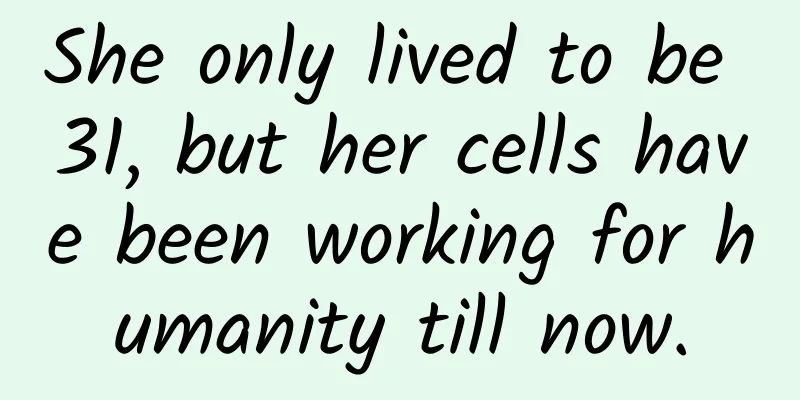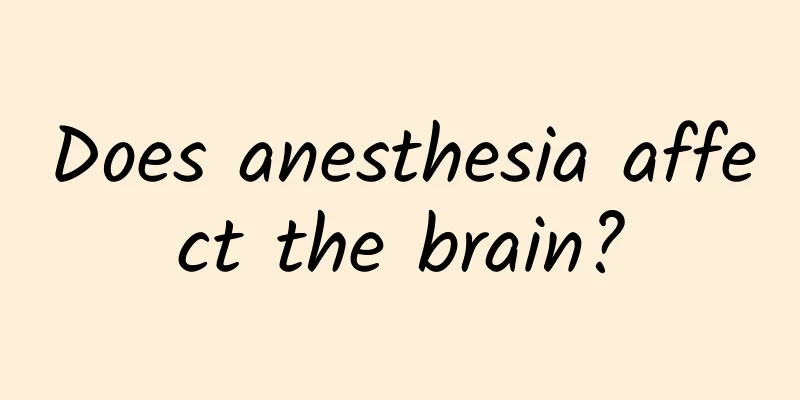She only lived to be 31, but her cells have been working for humanity till now.

|
On February 5, 1951, HeLa cells were born. The cell donor, Henrietta Lacks , is a 30-year-old mixed-race black woman whose life can be described as unfortunate: she is the tenth child of her parents, her mother died when she was young, and her father threw her to her grandfather. After dropping out of school, she married her cousin and gave birth to her first child at the age of 14. Among her five children, one has intellectual disabilities and four have hearing impairments, and they suffer from syphilis and gonorrhea... The tragic experiences of black women at the bottom of society in the United States, like the intellectually disabled (here is a medical term) women in rural China, all come in the form of a package. Henrietta Lacks | Wikimedia Commons Henrietta's misfortune was even more severe - she was diagnosed with cervical cancer and died eight months later due to the severe pain of cancer and systemic poisoning caused by the inability to urinate. On the 5th, she underwent a second biopsy, and researchers at Johns Hopkins University took a coin-sized piece of tissue from her cervical tumor and normal tissue. Immortal human cells Johns Hopkins University's move was not malicious. The university's cervical cancer authority was working hard to collect materials to prove the necessity of surgical intervention. George Gey, who was engaged in tissue culture research, was responsible for providing him with cancer cells that could grow in vitro and tried to culture each biopsy sample for this purpose. According to custom, the technician wrote the initials of the sample donor's name on the test tube. After a few days, the new cells filled the test tube at a speed visible to the naked eye and continued to multiply. This was the first immortal human cell discovered , and it was named after the words on the test tube - HeLa cell. George Gey at Johns Hopkins University, whose medical center was the only one in the area to accept black patients. | Wikimedia Commons HeLa cells don’t look ferocious, but they are a mess inside . Compared to the 23 pairs and 46 chromosomes of normal human cells, the number of chromosomes in HeLa cells has increased dramatically to 76-80 , and homologous chromosomes are no longer guaranteed to be paired. In addition, there are several chromosomes that have mutated and cannot be classified because their sources cannot be found. The reason for this phenomenon is that the famous human papillomavirus (HPV) inserts its viral genes upstream of the p53 gene, and p53 is an important protein that corrects errors in the DNA replication process. The lack of a correction mechanism makes HeLa cells like a book that has been pirated indiscriminately and inherited all kinds of incredible fallacies. HeLa cells dividing | Josef Reischig / Wikimedia Commons One of the fallacies is the overly efficient telomerase . Telomeres are a small section of DNA-protein complex "caps" at the end of chromosomes. Telomeres of ordinary cells gradually shorten as they divide. When telomeres can no longer shorten, cells stop dividing . However, the telomerase of HeLa cells is like a second-rate construction team that repairs them as they break down. As a result, HeLa cells not only break through the "Hayflick limit" that ordinary cells can only replicate 50-60 times, achieving "immortality" at the cellular level, but also allow HeLa cells to divide and pass on faster than other cells . HeLa cells have more chromosomes than normal cells | Smirnov et al. / Folia Biologica (2006) If mutations during cell propagation are natural and not a sin of war, HeLa cells have also done many things that are impersonations. HeLa cells are highly adaptable to culture conditions and proliferate very quickly. Once they contaminate other cell culture containers, what is left is most likely a bottle of HeLa cells. HEp-2, a cell line believed to be based on laryngeal squamous cell carcinoma, was actually contaminated to the point that only HeLa cells were left when it was first cultured. More than 5,700 papers that have been published on laryngeal cancer research based on the HEp-2 cell line were actually all spent on cervical cancer. This kind of divergence is not even new. As early as 1966, Stanley Gartler discovered that 18 commonly used artificially cultured cells were actually all HeLa cells , known as the HeLa bomb. In 1972, Soviet scientists announced that they had discovered cancer viruses in cancer patient cells. American scientists wanted to take samples and found that the so-called Soviet cancer patient cells were still HeLa cells. Soviet satellite carrying HeLa cells | Pretenderrs / Wikimedia Commons HeLa cells entered the Soviet Union very early. In 1960, the second artificial satellite launched by the Soviet Union carried HeLa cells to study the physiological effects of space environments such as weightlessness. Testing the effects of different physical, chemical and biological factors on cells is probably the most common use of HeLa cells: it is used to test nuclear explosions, x-rays, salmonella, HIV virus... But the first job of HeLa cells was to test vaccines . Contribution to benefit mankind In 1951, polio broke out in the United States . When no one came up with the fantastic idea of injecting disinfectant, the Americans came up with a vaccine. So how do you test the effectiveness of a vaccine ? In theory, if the vaccine is effective, the serum of the vaccine recipient will contain antibodies that can inactivate the pathogen. Scientists put the serum, virus, and HeLa cells together and found that if the serum of the vaccine recipient was used, the virus could not infect HeLa cells , which proved the effectiveness of the vaccine. Oral polio vaccine | Wellcome Library / Wikimedia Commons The first successful human-animal cell fusion experiment was also achieved using HeLa cells. This experiment laid the foundation for cell engineering pharmaceutical technology (such as monoclonal antibodies in middle school textbooks) and also provided an unexpected surprise: the product of the fusion of HeLa cells and mouse cells would gradually lose human chromosomes during the process of division from generation to generation. In this way, by following up and observing each generation of fused cells, the location of different genes on the chromosomes could be found, without the need to painstakingly cultivate and screen mutants as before. This made the mapping of the genome within reach . Director of the National Institutes of Health and Henrietta's descendants | NIH photo gallery / Wikimedia Commons In fact, in the first decade of the 21st century alone, two Nobel Prizes in Physiology and Medicine were directly based on research on HeLa cells: the 2008 Nobel Prize in Physiology or Medicine for HPV-induced cervical cancer and the 2009 Nobel Prize in Physiology or Medicine for the effects of telomeres and telomerase on cell lifespan. The indirect impact of HeLa cells is incredibly extensive: the Sinovac COVID-19 vaccine we are currently administering uses Vero cells (African green monkey kidney cells) to culture the virus, which is then processed into an attenuated vaccine. The cell culture technology originated from the cultivation of HeLa cells . The now very mature cold chain transportation was also pioneered on the basis of the mailing of HeLa cells back then. Vero cell COVID-19 vaccine | São Paulo Governorate / Wikimedia Commons The polio vaccine validated with HeLa cells not only protects humans, but also ends the old era of taking cells from living monkeys to validate the effectiveness of vaccines, saving countless monkeys. In fact, since the earliest institution that mass-produced HeLa cells was staffed by all black people, HeLa cells have also played a role in the struggle for racial equality . Henrietta HeLa cells have made outstanding contributions, but the person who provided HeLa cells has been unknown for a long time. Guy, who collected and cultivated HeLa cells, was a person who strictly abided by the Hippocratic Oath . He believed that revealing the patient's name would violate the privacy of the patient's family, so he announced that the donor of HeLa cells was an " unsung heroine in medical history " named Helen L. This vague statement made people make all kinds of absurd guesses about the true identity of the donor. One of the most outrageous views is that He La is the American radio expert and actress Hedy Lamarr. This pioneer of spread spectrum technology and nude movies lived until 2000. The book "The Immortality of Henrietta Lacks" published in 2010 tells the story of how Henrietta's children's lives were changed after they discovered that the HeLa cells came from their mother. | Oregon State University / Flickr Henrietta Lacks' full name was revealed in a memorial article published by Johns Hopkins University after Guy died of pancreatic cancer in 1970. In 1973, a letter published in Nature magazine pointed out that the true identity of the HeLa cell donor should be made public so that she could enjoy the honor she deserved . The commemoration and memorial of this ordinary, unfortunate and great woman who didn't know what she had done was on the right track. A brief biography of Henrietta's life, next to her grave | EMW / Wikimedia Commons Whether it is Henrietta or ourselves, people are always in chains, and the key to unlock the chains is undoubtedly knowledge. Author: Malay Tapir This article comes from the Species Calendar, welcome to forward If you need to reprint, please contact [email protected] |
<<: First of its kind! my country's new breakthrough in quantum communication
>>: Early spring is as hot as early summer? Be careful! All-around cold front is coming!
Recommend
How to eat to get better quickly after having erectile dysfunction? Dietary guidelines for ordinary people, pregnant women, children, the elderly... →
During the epidemic, home life cannot be separate...
Android Wear update: support for new gestures and listening to voice messages
According to foreign media reports, Google recent...
In global navigation, China's Beidou is on par with the US GPS
If Beidou is still just a noun in your eyes After...
A thousand-yuan phone also has a fingerprint "big trick" Dashen Note3 hands-on experience
Redmi, Meizu Blue, Honor Play, Lenovo Lemon... Do...
Are animal organs a health killer? Not necessarily, these 5 types are worth eating!
In many countries, people do not have the habit o...
Android Webview Java and Javascript safe interaction
Recently, I need to detect the source code of a w...
A small account with thousands of followers or a big V with millions? The key lies in these three moves!
From attracting new users to promoting activation...
What are these black spots on the edge of bus glass used for?
Image source: Tuchong Creative What are these bla...
The more "good-looking" these 6 body parts are, the more likely they are to have problems!!!
Source: Dr. Curious...
15 messaging platforms worth trying in 2019
【51CTO.com Quick Translation】As we all know, the ...
The 2018 Spring Festival movie season is very lively again, but who has the best poster copywriting?
Good news, good news. Just hold on for another we...
Are you having difficulty making decisions again? Why not let music help you make the decision this time?
In the past two years, the classic line "I h...
New energy vehicle marketing strategy
April is traditionally the auto show season, but ...
Android 7.0 Nougat's five biggest flaws: no support for floating windows
[[170700]] Introduction: Currently, Android 7.0 N...
Honeywell responds to unqualified mask inspection (with original text)
Honeywell responds to unqualified mask sampling (...









